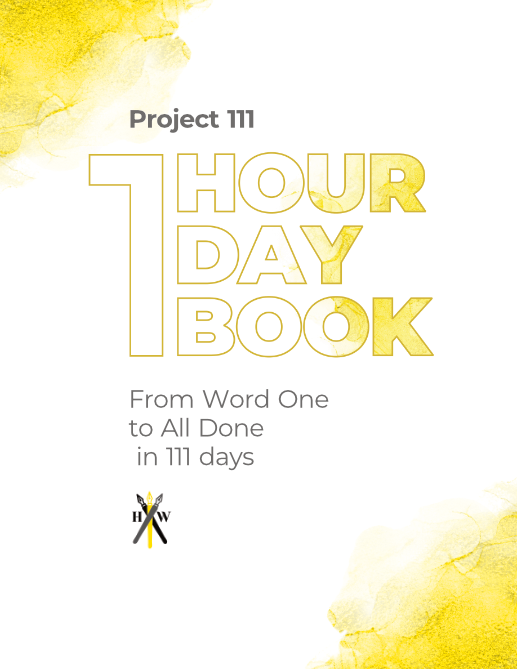When writing your novel, deciding on the point of view for your narration is an important choice. Depending on the genre you read, you may be more familiar with first person point of view than third, or vice versa. Maybe you’ve taken to more supposedly literary avenues and have read a few second person stories, where the narrator talks directly to you as the reader.
Telling a story from each of these points of view can have various impacts on your narrative. For instance, a third person point of view story has an easier time jumping between characters and detailing what’s going on in multiple locations.
A story told from second person might have the ability to immerse the reader more, given that they are so clearly addressed and almost become a character in the story.
Writing in first person has many benefits and a few drawbacks (as do all these other formats). In this article, we’ll discuss some of the reasons you might want to write in first person, some of the reasons you may not want to do so, and what tips you may need to get started in the rewarding process of telling a story from the “I” pronoun.
Table of Contents
What 1st Person Does Well

Writing in first person point of view is a tradition that has long had a place in fiction. From classics like Gulliver’s Travels, (mostly) Moby Dick, and The Great Gatsby, to more modern novels like The Hunger Games, The Martian, and The Name of the Wind, first person narration has been a viable means of story telling.
One of the main reasons for writing in first person point of view is the amount of depth of character you can convey. When the entire story is told from a single perspective, you can reach characterizations unlike most other points of view.
With first person point of view, you let the reader live in the headspace of your character. You can definitely get across how someone thinks and views the world with another point of view, but when using a first person narrator, everything that you write down will come from that character.
Your prose style will characterize your narrator, the way you write descriptions of people and places will come as if from your narrator’s mind, and every interaction and reaction will come from your narrator’s personality and worldview.
This kind of depth is almost unattainable with the other points of view. Writing in third person will have the prose as a filter or will distance the reader by juggling multiple character’s thoughts.
Another benefit of writing in first person is that it often feels easier to do. That may sound subjective, and it definitely is. For a select few it might prove more difficult, but I say that it’s easier because telling a story in this way will feel the most natural to us.
Every thought we have, the way we react, and the experiences we have are filtered through the first person lens. When you tell someone about your day, you tell it from the first person perspective, and it feels totally natural to you. Writing in this way should feel familiar in the sense that you can basically pour out your thoughts.
But the fact that you’re writing fiction complicates this idea for a few reasons. You aren’t explaining the world from your own view; you’re doing that from a made up character whose experiences and personality you can’t fully call your own.
Despite this fact, however, using a first person narrator can be simple.
When developing a character and deciding how that person talks, thinks, and acts, most authors will try to assume that character’s headspace. They want to really figure out their character so as to create a fully developed and realized person.
When writing from your main character’s perspective, you essentially take this process and magnify it to a new level. Now, you won’t just be thinking from your character’s perspective during dialogue or moments when you want to explain their thoughts, you will write your entire story from this point of view.
You should know your character well enough to think as they do and imagine what they might imagine. Basically, as you are writing, you get to play act as this character, and that can be really fun.
If you have a cast of characters and aren’t sure which character you would like to tell your story, you could either choose which character you feel like you “know” best, or you could do a piece of micro-fiction from each of their perspectives and see which one you enjoy most.
Maybe you choose one character to write from because you’re certain they’ll be an unreliable narrator and that intrigues you. Maybe you like one of the more serious characters because they contrast the goofy world you’ve built. Maybe you just choose the character that is most like you.
No matter who you pick, the important thing here is to inhabit the headspace of this character and style the entire story in a way that relates to them.
Some Setbacks From 1st Person

Every way of telling a story will have its pros and cons. Every narrator and form of narration is different, and choosing the method of storytelling that suits your story best is important.
Let’s examine some of the reasons writing in first person point of view might not suit your particular taste or style. You can definitely get around these setbacks, but knowing about them should help you determine if this means of fiction writing is the proper one for your particular tale.
The biggest disadvantage for the first person narrator is that its scope is severely limited. Unless you’ve constructed a narrator who can read minds or has impeccable knowledge, your narration won’t allow for an omniscient narrator.
Your story (theoretically) can only be told with the information your first person narrator has access to. In most cases, that means your main character and the few people they interact with and know about.
This limitation often removes the ability to tell an unbiased narrative, and the reader won’t be able to know what other characters are thinking or doing. First person narration gives way to some great subtext possibilities in order to develop and understand secondary and tertiary characters, but the reader won’t have access to their headspaces.
Another disadvantage to this style of writing is that if the reader doesn’t like your main character, they probably won’t like much of the book. Because everything will be told from the narrator’s perspective, the reader has to experience the main character with a level of proximity that most other methods of storytelling can bypass.
An example of a first person narrator driving away a potential audience comes from Catcher in the Rye. One of the largest and most prolific complaints for that book is that people just don’t like being in the head of Holden Caulfield, the main character.
He’s a difficult person to understand and his jaded personality can be frustrating. Many people have read the book with the lens of understanding his mental illnesses, and some people feel majorly uncomfortable reading such characters.
Now, whether or not this is a valid perspective is a different point, but the lesson here is that people may stray from your first person point of view if they feel that your character is difficult to read, unsettling, or contrary to their own worldview. (Reading fiction broadly to become more empathetic towards “the other” should help remedy this issue, but not everyone does this).

Our 84-page book planner and 111 day writing course.
A Few Miscellaneous Tips

The previous section mentioned some drawbacks to writing in first person pronouns. We’ll go over some of the ways to mitigate those negatives and then talk about some other ways to get started with writing from the first person perspective.
Avoiding Limitation
I said that the first person narrative can be severely limited. While that may be fundamentally true, there are ways to broaden your story’s scope and overcome this issue. An example of this comes from The Name of the Wind.
I doubt that anyone who has read that novel would say that the scope of the story is small or limited, and there are many reasons for this line of thinking. Even though the story is told from the main character’s perspective, Patrick Rothfuss adds layers in a few ways.
First off, he uses a frame narrative style of writing that basically creates two versions of his first person narration. We have the Kvothe (main character) who tells the story from the inn, and then we have Kvothe from the story that the innkeeper is telling. This split perspective can be really intriguing and sets up a potentially unreliable narrator while having the ability to essentially bounce between two different characters.
Another way Rothfuss avoids limitation is by having the main character interact with lots of people and things. Because the narrator is experiencing people widely and talking with them, the narration remains fresh in that multiple voices are represented and keep the reader’s interest.
The final way Rothfuss bypasses narrative limitation (that we’ll talk about at least) is through having multiple layers of story going at a time. As mentioned, the story has a frame narrative and then the meat of the novel, but many times throughout the books, Rothfuss will have other characters tell stories.
By adding narratives that don’t come from the main narrator, Rothfuss is able to change up his narration style and keep the reader’s interest. Being three stories deep (or more) can ask a lot of the reader, but the end result is worth it in my eyes.
Narrator Likeability
A disclaimer, overcoming this problem isn’t always possible. Certain readers are drawn to a specific voice and won’t read anything other than that voice. Since this is the case, they may drop your book because you don’t fit their liking.
Obviously, you shouldn’t be trying to write for these people, but the notion extends to anyone who won’t read an unlikeable character. An easy fix to this problem is to make all your characters likeable (check out this article). But maybe you want to write a first person narrative from someone who makes you uncomfortable.
This type of storytelling can really stretch your creative writing skills and has potential to be an important story. If you want to write that story, you can get around likeability from your narrator by having other likeable characters that your narrator interacts with often.
For example, Nick Carraway from The Great Gatsby isn’t an unlikeable character, per se, but he doesn’t really have a lot going for him. Fitzgerald fixes this problem by having him tell Gatsby’s story, a character who the reader can invest their interest in.
You can also fill your story with interesting characters and moments that the reader will hold onto in place of a beloved narrator. If your narrator is unlikeable and you want to keep them that way, let as many other parts of your story be as likeable as possible, and your reader could still enjoy your book.
Other Ideas
Experiment! The only confines to writing are the ones placed on us by ourselves and convention. The greatest novels typically break this mold, and you can take this opportunity in the first person to try something new.
Bring back writing in first person to tell someone else’s story! Like The Great Gatsby and Moby Dick, the first person narrator can be someone other than the main character. This style of story was pretty popular back in the day but hasn’t received much attention in our time. Bring this idea into fantasy and sci-fi.
Try different tenses! Writing in first person can feel strange at times, but it can be a matter of the tense you’re using. If you find that you don’t like writing in first person past tense, you may want to try first person present. Messing around with little things like this can really help you find what fits you best.
Try stream of consciousness! This method of writing is something that can really help when drafting, but it can be a good way to get into the head of your character. You may even try writing a whole novel like this. This style of writing can feel very organic for readers and writers because it’s a natural way of speaking and thinking.
Conclusion

Hopefully after reading these suggestions about first person narration you’ll feel more comfortable with what it can offer you. Just remember that every story needs a narrator, and different narrators and forms of narration have their strengths and weaknesses.
First person is great at detailing one character and offering a depth of character work, but that comes at the cost of your other characters receiving less focus.
Remember also that this can be one of the easiest forms of creative writing! If you haven’t written a book yet but really want to, try a first person narrator. It can be really fun and exciting to write, so this might be the key to finishing your first novel.
For more writing tricks and suggestions, check out the other articles in our blog!
gavinwride
Gavin is a fantasy author, short story enthusiast, and nature lover. When he’s not reading, writing, or exploring the outdoors, he is likely playing games. His board game collection is probably too big for someone living in a small apartment, and he has enough yet-to-be-played video games to fill a lifetime. His favorite book is "The Name of the Wind". His favorite author is Edward Abbey. His favorite game is "Dark Souls III", and he’d be more than happy to spend the day talking about lore, bosses, and game mechanics.
Our 84-page book planner and 111 day writing course.
